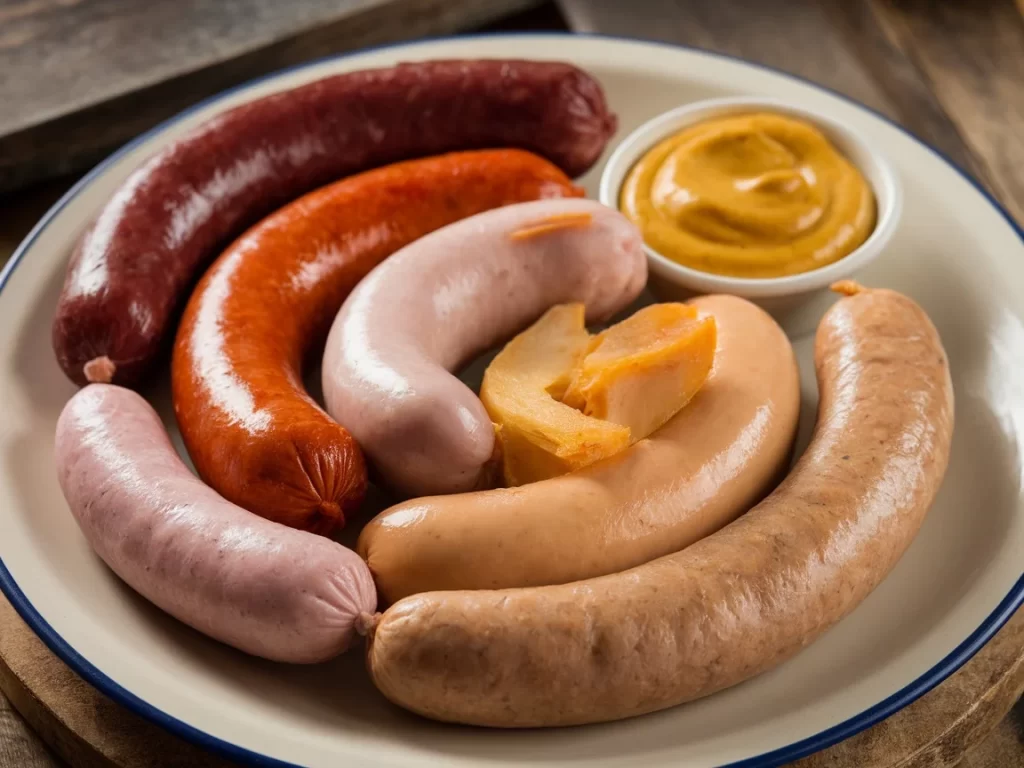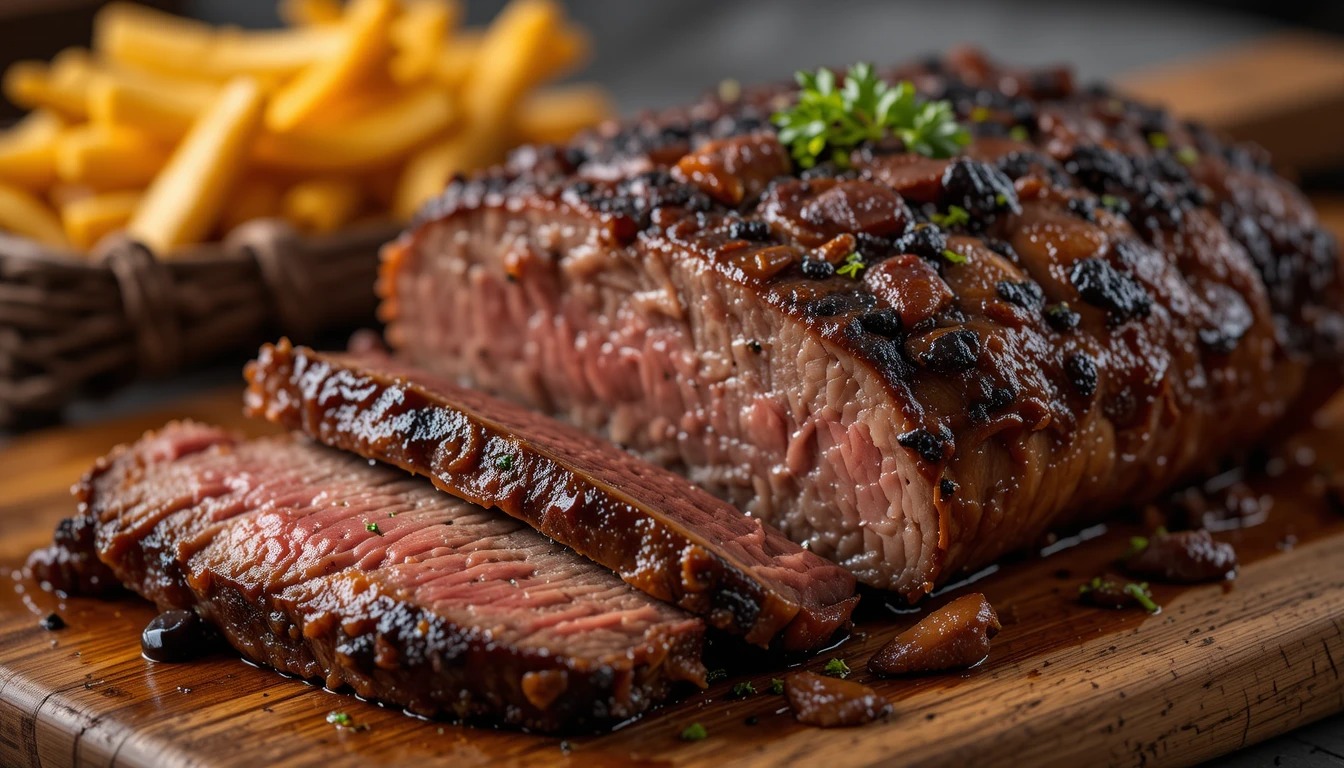
Ever wondered what smoked ostrich tastes like? You’re in for a treat! Smoking exotic meats has become a thrilling culinary trend, pushing the boundaries of traditional barbecue. In 2025, more adventurous eaters are exploring the rich, complex flavors of uncommon meats prepared with time-honored smoking techniques. According to a recent survey by the Exotic Meat Enthusiasts Association, interest in smoking unusual meats has surged by 35% in the past year alone! Let’s dive into this flavorful world and uncover the secrets to perfectly smoked exotic meats.
Selecting and Preparing Exotic Meats for Smoking
Let me tell you, when I first got into smoking exotic meats, I was like a kid in a candy store. But boy, did I make some rookie mistakes! I remember the time I bought some cheap, mystery-sourced kangaroo meat from a sketchy online seller. Big mistake. Not only was the quality awful, but I later found out it wasn’t ethically sourced. Lesson learned: always go for high-quality, sustainably sourced exotic meats.
These days, I’m much pickier about where I get my meat. I’ve found some great local butchers who specialize in exotic meats, and I’ve even made friends with a few game hunters who share their bounty. It’s not just about the taste – it’s about knowing where your food comes from and supporting responsible practices.
Now, let’s talk about the unique characteristics of different exotic meats. Each one is like a new adventure for your taste buds! Take kangaroo, for example. It’s super lean, which means it can dry out quickly if you’re not careful. On the flip side, wild boar is fatty and rich, kinda like pork on steroids. Understanding these differences is crucial for smoking success.
I learned this the hard way when I tried to smoke some lean venison like it was a fatty brisket. Let’s just say it came out drier than the Sahara Desert. Now I know to adjust my techniques based on the meat’s fat content and texture.
When it comes to thawing and handling exotic meats, food safety is no joke. I once got a nasty bout of food poisoning from some improperly thawed ostrich meat. Trust me, you don’t want to go through that. Always thaw your meats in the fridge, never on the counter. And use separate cutting boards and utensils for raw meats to avoid cross-contamination.
Let’s talk marinades and rubs. This is where you can really get creative and complement the unique flavors of exotic meats. For gamey meats like elk or bison, I love using a mix of juniper berries, rosemary, and black pepper. It really brings out the earthy flavors. For leaner meats like ostrich or emu, a citrus-based marinade can help keep them moist during smoking.
Finally, don’t skimp on the trimming and preparation. I once left too much silver skin on a piece of venison, and it was like chewing on a rubber band. Take the time to trim excess fat and remove any tough membranes. Your taste buds will thank you later!
Smoking Techniques for Exotic Meats
Alright, let’s dive into the fun part – smoking these bad boys! First up, wood selection. This can make or break your smoked meat, no joke. I learned this the hard way when I used mesquite to smoke some delicate quail. It was like eating an ashtray. Now I know better – use milder woods like apple or cherry for lighter meats, and save the strong stuff like hickory or oak for robust meats like wild boar or bear.
Temperature control is crucial when smoking exotic meats. I’ve got a digital thermometer that’s practically my best friend during long smoking sessions. For most exotic meats, I aim for a smoker temperature between 225°F and 250°F. But here’s the thing – every cut is different. A thick elk roast might take hours, while thin slices of ostrich could be done in under an hour.
Speaking of time, don’t get too hung up on cooking duration. It’s all about internal temperature. I once ruined a beautiful piece of bison by stubbornly sticking to a recipe’s timing instead of trusting my meat thermometer. Now I know better – cook to temperature, not time.
Hot smoking vs. cold smoking – that’s a whole other ball game. Hot smoking is what most people think of when they imagine smoked meats. It’s great for cooking and flavoring at the same time. Cold smoking, on the other hand, is all about flavor without the heat. I love cold smoking some exotic cheese to pair with my hot-smoked meats. It’s a match made in culinary heaven!
Now, let’s talk gear. You don’t need a fancy setup to smoke exotic meats. I started with a DIY smoker made from an old oil drum, and let me tell you, it worked like a charm. These days, I’ve upgraded to a nice electric smoker, but I still use my trusty old grill with a smoker box for quick jobs. The key is understanding how to control airflow and temperature in whatever setup you’re using.
Monitoring internal temperatures is absolutely crucial. I can’t stress this enough. Overcooked exotic meat is a tragedy – it’s often expensive and can get tough and dry if you’re not careful. For most exotic meats, I aim for an internal temperature of 135°F to 140°F for medium-rare. Then I let it rest for at least 10 minutes before slicing. Trust me, that resting period makes all the difference in juiciness.
Flavor Pairings and Serving Suggestions
Okay, so you’ve smoked your exotic meat to perfection. Now what? This is where you can really let your creativity shine with sauces and glazes. I love experimenting with unique flavor combinations. One of my all-time favorites is a coffee and cocoa rub for smoked bison, finished with a cherry chipotle glaze. It’s to die for!
For leaner meats like kangaroo or ostrich, I like to whip up a tangy yogurt-based sauce with mint and cucumber. It adds moisture and complements the meat without overpowering it. And for fatty meats like wild boar, a spicy-sweet mango habanero sauce cuts through the richness perfectly.
When it comes to side dishes, think about complementing and contrasting flavors. I love serving smoked venison with a tart cherry compote and creamy polenta. The sweetness of the cherries and the richness of the polenta balance out the lean, slightly gamey flavor of the venison beautifully.
For something like smoked alligator (yeah, I’ve gone there!), I like to lean into the Cajun vibes with dirty rice and grilled okra. It’s like a swamp on a plate – in the best possible way!
Now, let’s talk drinks. Pairing the right beverage with your smoked exotic meats can elevate the whole experience. For red meats like bison or elk, you can’t go wrong with a bold red wine like Syrah or Zinfandel. For lighter meats like quail or pheasant, I prefer a crisp white like Sauvignon Blanc or even a dry Riesling.
Beer lovers, don’t worry – I’ve got you covered too. A malty brown ale pairs beautifully with smoked wild boar, while a hoppy IPA can stand up to the strong flavors of smoked goat or lamb.
When it comes to presentation, remember that we eat with our eyes first. I love using rustic wooden boards for serving smoked meats. It adds to that primal, outdoorsy vibe. For a more upscale look, slice your meat thinly and fan it out on a white plate with colorful garnishes. A sprinkle of flaky sea salt and a drizzle of high-quality olive oil can make even the most exotic meat look Instagram-worthy.
Don’t forget about leftovers! Smoked exotic meats can be even better the next day. I love using leftover smoked venison in a hearty chili, or thinly sliced smoked ostrich in a salad with blue cheese and walnuts. Just make sure to store your leftovers properly – in an airtight container in the fridge, they’ll keep for 3-4 days.
And here’s a pro tip: if you have more leftovers than you can eat, slice the meat thinly and freeze it in portions. It’s perfect for quick sandwiches or to top a salad straight from the freezer.
Smoking exotic meats is an adventure, and like any good adventure, it comes with its share of trials and triumphs. But trust me, when you bite into that perfectly smoked piece of kangaroo or savor the rich flavors of a wild boar shoulder that’s been smoking all day, it’s all worth it. So fire up that smoker, get your hands on some exotic meats, and start exploring. Your taste buds will thank you!
Conclusion
Smoking exotic meats is an exciting culinary adventure that opens up a world of new flavors and textures. By mastering the art of selection, preparation, and smoking techniques, you can create unforgettable dishes that will wow your taste buds and impress your guests. So fire up that smoker, grab some kangaroo or alligator meat, and get ready to embark on a delicious journey into the realm of exotic smoked meats. Who knows? You might just discover your new favorite dish!
FAQ
- Is it safe to eat smoked exotic meats?
Yes, when properly sourced, handled, and cooked to appropriate temperatures, smoked exotic meats are safe to eat. - Where can I buy exotic meats for smoking?
Specialty butchers, online meat retailers, and some gourmet grocery stores offer exotic meats suitable for smoking. - What’s the best wood for smoking exotic meats?
It depends on the meat, but fruitwoods like apple or cherry often work well, as do milder woods like alder or maple. - How long does it take to smoke exotic meats?
Smoking times vary depending on the meat and cut, ranging from 2-8 hours for most exotic meats. - Can I use my regular smoker for exotic meats?
Absolutely! Most standard smokers work great for exotic meats, just adjust your techniques as needed.


